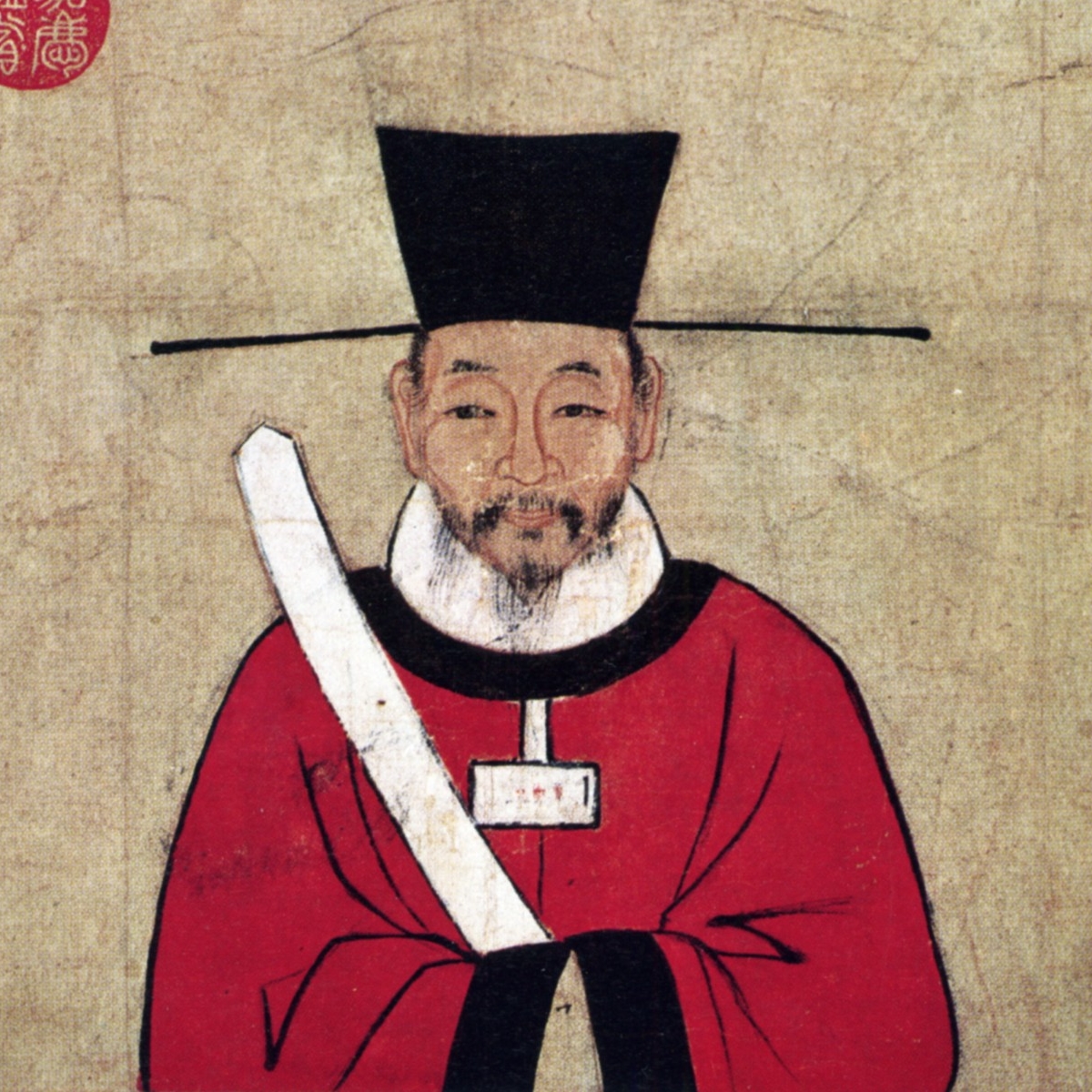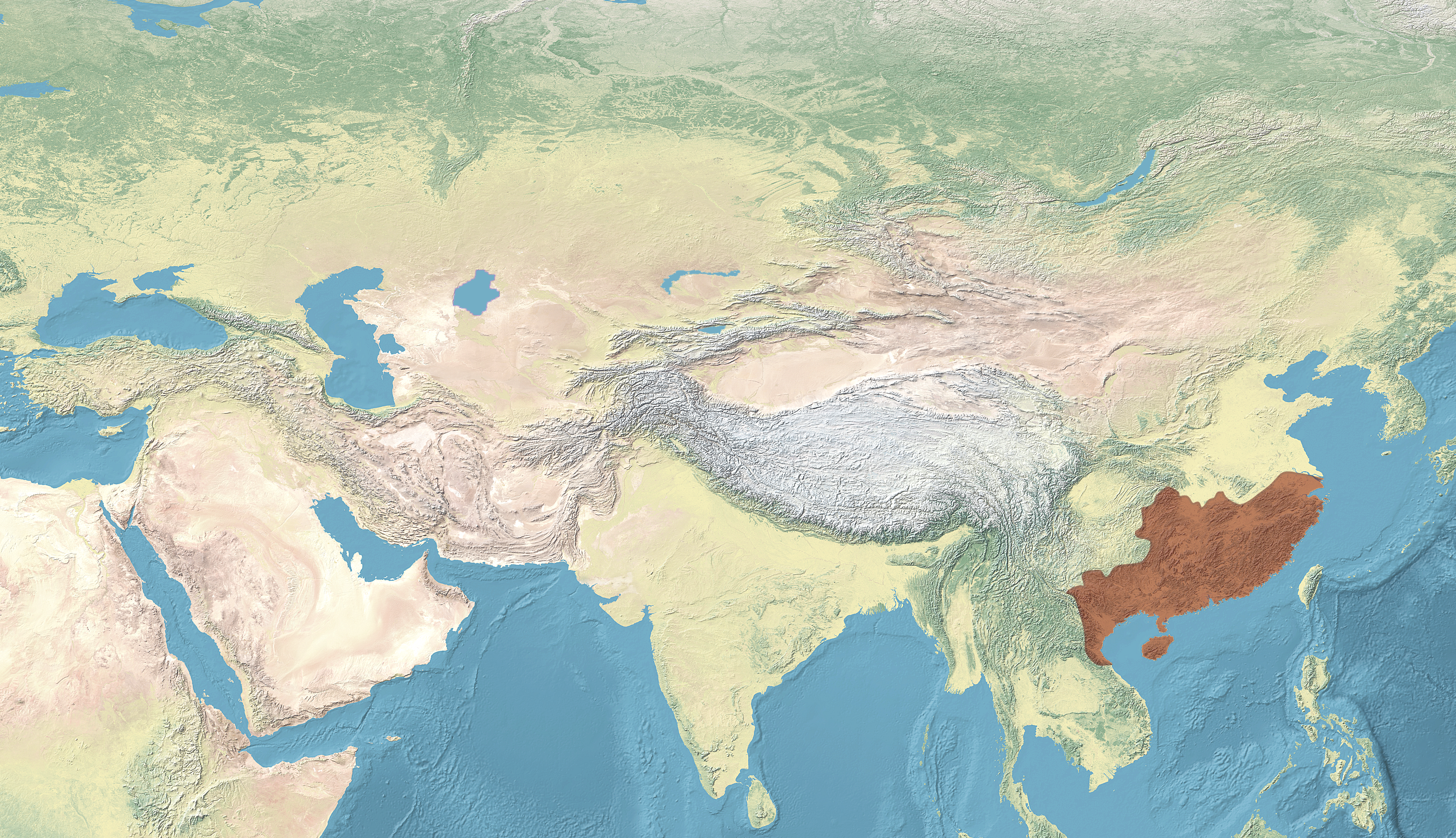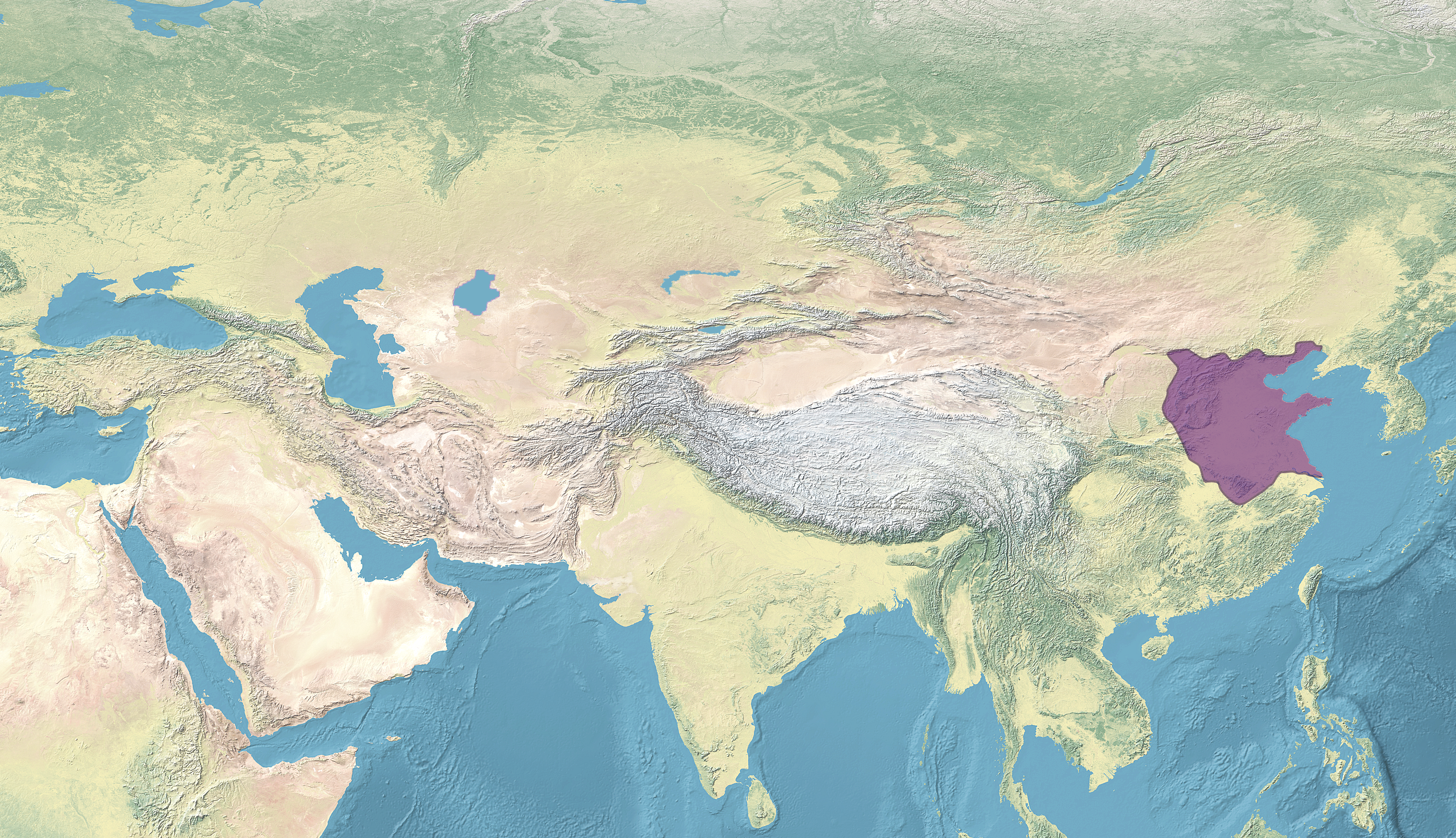|
Empress Taimu
Empress Taimu (; 559?ŌĆō603?) was posthumously honored the first empress of the Chinese Tang dynasty. She was known as Duchess Dou or Lady Dou (ń½ćµ░Å) throughout her lifetime, and was the wife of Emperor Gaozu and mother of Emperor Taizong. Background Lady Dou was the daughter of Dou Yi (519 ŌĆō 3 January 583) and Princess Xiangyang. Dou Yi was the son of Dou Yue (ń¬”Õ▓│), an elder brother of Dou Chi (ń½ćńåŠ), a high-level official of both the Northern Zhou and successive Sui dynasties. Dou Chi also had a son named Dou Wei, a scribe for Yang Xiu, the Prince of Shu, who later served as chancellor during the early years of the Tang dynasty. Her mother Princess Xiangyang was the fifth daughter of Yuwen Tai, Emperor Wen of Northern Zhou, and a sister of Empress Yuwen. Lady Dou also had an elder brother, Dou Xian (ń½ćĶ┤ż), and at least one other elder cousin ( Dou Kang). As a young child, Lady Dou was raised in the palace and particularly favored by her uncle Yuwen Yong (Emper ... [...More Info...] [...Related Items...] OR: [Wikipedia] [Google] [Baidu] |
East Asian Age Reckoning
Traditional East Asian age reckoning covers a group of related methods for reckoning human ages practiced in the East Asian cultural sphere, where age is the number of calendar years in which a person has been alive; it starts at 1 at birth and increases at each New Year. Ages calculated this way are always 1 or 2 years greater than ages that start with 0 at birth and increase at each birthday. Historical records from China, Japan, Korea, and Vietnam have usually been based on these methods, whose specific details have varied over time and by place. The South Korean government switched to the international system on June 28, 2023. Chinese age reckoning, the first of these methods, originated from the belief in ancient Chinese astrology that one's fate is bound to the stars imagined to be in opposition to the planet Jupiter at the time of one's birth. The importance of this duodecennial cycle is also essential to fengshui geomancy but only survives in popular culture as the 12 ... [...More Info...] [...Related Items...] OR: [Wikipedia] [Google] [Baidu] |
Yuwen Yong
The Yuwen ( < : *''waB-mun'' < *''waʔ-mən''Schuessler, Axel. 2007. ''An Etymological Dictionary of Old Chinese''. University of Hawaii Press. p. 587, 514) is a which originated from a pre-state of ethnicity of |
Dugu Sisters
The Dugu sisters were part-Xianbei, part- Han sisters of the Dugu clan who lived in the Western Wei (535ŌĆō557), Northern Zhou (557ŌĆō581) and Sui (581ŌĆō618) dynasties of China. All were daughters of the Western Wei general Dugu Xin. The eldest sister became a Northern Zhou empress, the seventh sister became a Sui dynasty empress, and the fourth sister was posthumously honored as empress of the Tang dynasty (618ŌĆō907). The seventh sister Dugu Qieluo, in particular, was one of the most influential women in ancient Chinese history, owing to her closeness to her husband Emperor Wen of Sui, throughout their 45-year monogamous marriage. Some authors have written that the three sisters "married emperors" or "married into imperial families". However, at the time of their marriages, none of their husbands were members of an imperial family (yet): each of the three sisters became an empress or a posthumous empress after a dynastic change. Out of the three dynasty changes, only the fir ... [...More Info...] [...Related Items...] OR: [Wikipedia] [Google] [Baidu] |
Emperor Wen Of Sui
Emperor Wen of Sui (; 21 July 541 ŌĆō 13 August 604), personal name Yang Jian (), Xianbei name Puliuru Jian (), was the founding Emperor of China, emperor of the Chinese Sui dynasty. As a Buddhist, he encouraged the spread of Buddhism through the state. He is credited with reunifying China proper in 589, bringing an end to nearly three centuries of political fragmentation that began with the breakaway of the Cheng-Han and Han-Zhao regimes from the Jin dynasty (266ŌĆō420), Western Jin dynasty in 304. His reign also saw the initiation of the Grand Canal (China), Grand Canal, a major infrastructure project that would later facilitate the integration of northern and southern China. Yang Jian inherited the title of Duke of Sui upon his father's death in 568. As a Northern Zhou official, Yang Jian served with apparent distinction during the reigns of the Emperor Wu of Northern Zhou, Emperor Wu and Emperor Xuan of Northern Zhou, Emperor Xuan. He served as a military commander and p ... [...More Info...] [...Related Items...] OR: [Wikipedia] [Google] [Baidu] |
Empress Zhangsun
Empress Zhangsun (ķĢĘÕŁ½ńÜćÕÉÄ, personal name unknown, presumably Wugou (ńäĪÕ×ó) (15 March 601 ŌĆō 28 July 636), formally Empress Wendeshunsheng (µ¢ćÕŠĘķĀåĶü¢ńÜćÕÉÄ, literally "the civil, virtuous, serene, and holy empress") or, in short, Empress Wende (µ¢ćÕŠĘńÜćÕÉÄ), was a Chinese essayist and an empress of the Chinese Tang dynasty. She was the wife of Emperor Taizong and the mother of Emperor Gaozong. She was well educated, and her ancestors were of Xianbei ethnicity. Their original surname was Tuoba, later changed to Zhangsun. During her tenure as empress, she served as a loyal assistant and honest advisor to her husband, Emperor Taizong. Background The future Empress Zhangsun was born on 15 March 601. Her father was the Sui dynasty general Zhangsun Sheng (ķĢĘÕŁ½µÖ¤), and her mother was Zhangsun Sheng's wife Lady Gao, the daughter of the official Gao Jingde (ķ½śµĢ¼ÕŠĘ). She had at least four older brothersŌĆöZhangsun Sheng's oldest son Zhangsun Xingbu (ķĢĘÕŁ½ĶĪīÕĖā, who w ... [...More Info...] [...Related Items...] OR: [Wikipedia] [Google] [Baidu] |
Zhangsun Wuji
Zhangsun Wuji (; died 659), courtesy name Fuji (), formally the Duke of Zhao, was a Chinese politician who served as a chancellor in the early Tang dynasty. He was Empress Zhangsun's brother, which made him a brother-in-law of Emperor Taizong (Li Shimin) and a maternal uncle of Emperor Gaozong (Li Zhi). He was an important advisor to Li Shimin when the latter was still the Prince of Qin during the reign of his father, Emperor Gaozu (Li Yuan). He helped Li Shimin overcome his brothers Li Jiancheng (the Crown Prince) and Li Yuanji (the Prince of Qi) in a succession struggle at the Xuanwu Gate Incident, eventually enabling Li Shimin to become the heir apparent and later the emperor. He was also instrumental in Emperor Taizong's selection of Li Zhi as the Crown Prince, and was exceedingly powerful after Li Zhi took the throne as Emperor Gaozong. However, he gradually fell out of his nephew's favour by failing to support Emperor Gaozong's decision to depose his first wife, Empress ... [...More Info...] [...Related Items...] OR: [Wikipedia] [Google] [Baidu] |
Zhangsun Sheng
Zhangsun Sheng or Zhangsun Cheng (; 552 ŌĆö 609), courtesy name Jicheng (ÕŁŻµÖ¤), was a Chinese statesman, diplomat and general of Xianbei extraction who served the Sui dynasty. He was China's chief strategist about Turkic policy. He was described as "intelligent and quick-witted, had some knowledge of clerical work, was skilled in pellet shooting and archery, and was exceptionally agile". He was posthumously ennobled Duke of Qi (ķĮŖÕ£ŗÕģ¼) and was given the posthumous name Xian (ńŹ╗). Early years He was born in 552 in Luoyang during Northern Zhou dynasty to Zhangsun Si (ķĢ┐ÕŁÖÕģĢ) and a lady from Chigan (or Xue) clan. He hailed from Zhangsun Clan of Henan. It was written that his ancestors traced their origin to the Xianbei dynasty Northern Wei's founding emperor Emperor Taiwu of Northern Wei's 17th generation ancestor Tuoba Kuaili (µŗōµŗöÕäłń½ŗ) ŌĆö that their ancestor was Tuoba Kuali's third son, who took the surname Baba (µŗöµŗö), eventually changed to Zhangsun when Empero ... [...More Info...] [...Related Items...] OR: [Wikipedia] [Google] [Baidu] |
Yuwen Hu
Yuwen Hu (; 513 ŌĆō 14 April 572), courtesy name Sabao (Ķ¢®õ┐Ø, also a title, which can be traced back to ''sartp─üw ŌĆ£caravan leaderŌĆØ'', but was used as given name, in many cases by Buddhists - referring to the metaphorical meaning of wise leader), posthumous name Duke Dang of Jin (µÖēĶĢ®Õģ¼), was a regent of the Xianbei-led Northern Zhou dynasty of China. He first came into prominence as the nephew of Western Wei's paramount general Yuwen Tai, and after Yuwen Tai's death in 556, he became the guardian to Yuwen Tai's son Yuwen Jue. In 557, he forced Emperor Gong of Western Wei to yield the throne to Yuwen Jue (Emperor Xiaomin), establishing the Northern Zhou dynasty. However, Yuwen Hu dominated the political scene, and after Emperor Xiaomin tried to seize power later that year, he killed Emperor Xiaomin and replaced him with another son of Yuwen Tai, Emperor Ming. In 560, he poisoned Emperor Ming, who was succeeded by another son of Yuwen Tai, Emperor Wu. In 572, Emperor Wu ... [...More Info...] [...Related Items...] OR: [Wikipedia] [Google] [Baidu] |
Zizhi Tongjian
The ''Zizhi Tongjian'' (1084) is a chronicle published during the Northern Song dynasty (960ŌĆō1127) that provides a record of Chinese history from 403 BC to 959 AD, covering 16 dynasties and spanning almost 1400 years. The main text is arranged into 294 scrolls (), each equivalent to a chapterŌĆötotaling around 3 million Chinese characters. In 1065, Emperor Yingzong of Song commissioned his official, Sima Guang (1019ŌĆō1086), to lead a project to compile a Universal history (genre), universal history of China, and granted him funding and the authority to appoint his own staff. His team took 19 years to complete the work and in 1084 it was presented to Emperor Yingzong's successor Emperor Shenzong of Song. It was well-received and has proved to be immensely influential among both scholars and the general public. Endymion Wilkinson regards it as reference quality: "It had an enormous influence on later Chinese historical writing, either directly or through its many a ... [...More Info...] [...Related Items...] OR: [Wikipedia] [Google] [Baidu] |
Chen Dynasty
The Chen dynasty (), alternatively known as the Southern Chen (ÕŹŚķÖ│ / ÕŹŚµ£ØķÖ│) in historiography, was a Dynasties in Chinese history, Chinese imperial dynasty and the fourth and last of the Northern and Southern dynasties#Southern dynasties, Southern dynasties during the Northern and Southern dynasties period. Following the Liang dynasty, the Chen dynasty was founded by Emperor Wu of Chen, Chen Baxian (Emperor Wu). The Chen dynasty further strengthened and revitalized the economy and culture of southern China, and made territorial expansions northward, laying the foundation for future dynasties. It was conquered by the Sui dynasty in 589, marking an end to the Northern and Southern dynasties period in Chinese history. The descendants of the Chen imperial family continued to hold powerful high-ranking positions in the imperial courts of both the Sui and Tang dynasty, Tang dynasties. History Founding and expansion: Chen Baxian In the twilight of the Liang dynasty (548ŌĆō55 ... [...More Info...] [...Related Items...] OR: [Wikipedia] [Google] [Baidu] |
Northern Qi
Qi, known as the Northern Qi (), Later Qi (ÕŠīķĮŖ) or Gao Qi (ķ½śķĮŖ) in historiography, was a Dynasties in Chinese history, Chinese imperial dynasty and one of the Northern and Southern dynasties#Northern dynasties, Northern dynasties during the Northern and Southern dynasties era. It ruled the eastern part of northern China from 550 to 577. The dynasty was founded by Emperor Wenxuan of Northern Qi, Gao Yang (Emperor Wenxuan), and was eventually conquered by the Xianbei-led Northern Zhou, Northern Zhou dynasty in 577. History Northern Qi was the successor state of the Chinese Xianbei state of Eastern Wei and was founded by Emperor Wenxuan of Northern Qi, Emperor Wenxuan. Emperor Wenxuan had a Han Chinese, Han father of largely Xianbei culture, Gao Huan, and a Xianbei mother, Lou Zhaojun. As Eastern Wei's powerful minister Gao Huan was succeeded by his sons Gao Cheng and Gao Yang, who took the throne from Emperor Xiaojing of Eastern Wei in 550 and established Northern Qi as Emper ... [...More Info...] [...Related Items...] OR: [Wikipedia] [Google] [Baidu] |
Muqan Qaghan
Muqan Qaghan (, , , Rouran: æĆ½æĆ╝æĆ¢æĆģæĆ” æĆĢæĆģæĆ¢æĆģæĆ”, romanized: ''Mu╔Żan Qa╔Żan'') was the second son of Bumin Qaghan and the third khagan of the G├Čkt├╝rks who expanded their khaganate and secured the borders against the Hephthalites, making it the biggest country ever existing at the time. Name According to Sergey Klja┼Ītornyj and Vladimir Liv┼Īic, this ruler is mentioned in the 3rd and 5th lines of the Left Side and the 3rd lines of the Front Side of the Sogdian Bugut Inscription as "mw╬│ŌĆÖn ╬│ŌĆÖ╬│ŌĆÖn", and according to Yutaka Yoshida and Takao Moriyasu, in the 2nd, 3rd and 5th lines of the B-1 Side and the 3rd lines of the B-2 Side as "mwxŌĆÖn xŌĆÖ╬│ŌĆÖn." Turkish researchers Talat Tekin, Ahmet Ta┼¤a─¤─▒l, Ahmet Bican Ercil├ósun as well as Christopher Beckwith reconstructed his Turkic regnal name as ''Buqan'' and equated him to Bokhanos (╬ÆŽÄŽć╬▒╬Į╬┐Žé) of Menander Protector. Biography He was born Ashina Yandou (ķś┐ÕÅ▓ķéŻńćĢķāĮ) to Bumin Qaghan ... [...More Info...] [...Related Items...] OR: [Wikipedia] [Google] [Baidu] |



